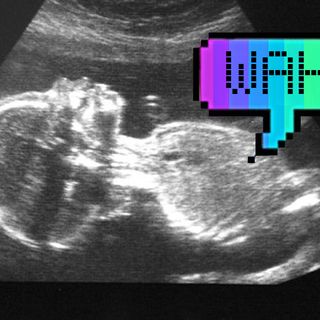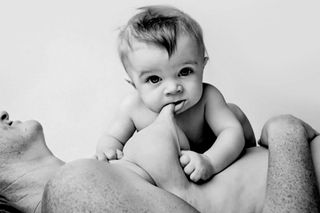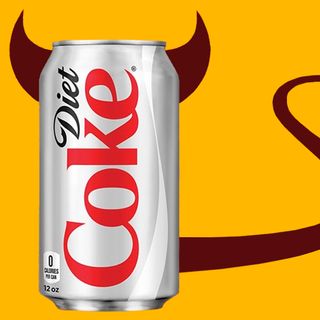
15 Things Everyone Tells You About Breastfeeding That Aren’t True
Small breasts won’t produce less milk, and drinking cow’s milk will not help you produce breast milk.

Breastfeeding is not rocket science, yet everyone around makes it seem like it is. There are so many misconceptions and myths regarding an act so common and fairly straightforward that we’ve decided to address them in order to make it easier for you. Here are some of the most common breastfeeding myths, and the truths they mask.
MYTH 1: Colostrum, or first milk after childbirth, should be discarded because it is stale.
False. Colostrum is neither stale, nor is it harmful for the baby. On the contrary, it’s essential because it contains a lot of infection-fighting substances that can boost a newborn’s immunity. It’s rich in vitamins K and A, highly nutritious and should be given to the baby immediately after birth. You can think of it as the baby’s first immunity booster shot.
MYTH 2: Breastfeeding after a C-section delivery isn’t possible.
False; breastfeeding after a C-section is entirely possible; however, the process may be delayed till the anesthesia wears off.
MYTH 3 : Babies should be given honey-, sugar- or jaggery-water before the first breastfeed.
False. These are cultural traditions, not necessities with any health benefit to the child. In fact, these practices may be detrimental — they can interfere with establishing breastfeeding, delay proper nourishment of a child, and may prompt infection of the newborn’s vulnerable system.
MYTH 4: Small breasts produce less milk.
False. The fact is, small breasts produce milk as efficiently as large breasts. Breast milk production depends on secretory glands that are present in the same number in all breasts, irrespective of cup size. The amount of milk you produce will actually depend on the infant and how much they suck at your breast. The more they suck, the more the mother’s body secretes oxytocin and prolactin — the two main hormones that stimulate breast milk production, enable letdown (that is, the reflexive release of milk in response to suckling), and maintain breast milk supply.
MYTH 5: Nipples should be washed each time before feeding the baby.
False. This myth persists out of worry that a baby might be exposed to infection from unwashed nipples. But breastfeeding isn’t a risk for babies, washed nipples or no; in fact, breastfeeding boosts babies’ immunity. Instead, the only thing washing nipples accomplishes is the removal of the skin’s natural, protective oils, which could cause dryness and cracking.
MYTH 6: Breast milk sours in the breast if the baby does not consume it.
False. A mother’s milk always remains fresh inside her, regardless of whether her baby feeds. (Expressed breast milk does have a shelf life outside of the breast, however.)
MYTH 7: You shouldn’t breastfeed babies if they are nauseous or have diarrhea.
False. On the contrary, babies benefit a lot from mother’s milk if and when they have gut infections. It’s okay to stop other foods, but breast milk should be continued (unless there’s a risk the baby might vomit up breast milk as they feed).
MYTH 8: If a baby cries excessively, it means that the mother isn’t producing enough milk and she should start top feeds.
False. Babies cry for many reasons — they may be wet, too cold, too warm, may be in pain, have have heard a loud, scary noise, or simply want to be held. Excessive crying doesn’t indicate the baby needs a breastfeed, let alone a top feed, and assuming it does might lead parents to miss the actual cause behind the tears.
If your baby is crying excessively, but is passing urine at least 6-7 times in 24 hours, and gaining at least 500 grams a month, they’re getting enough breast milk; something else is behind their discomfort.
MYTH 9: How much milk you pump is how much milk you produce.
False. A baby will always get more milk from your breast than your pump will. The pump is not as effective at stimulating breast milk production as the baby’s sucking; so, depending on when your letdown reflex happens, you could pump more, or less, milk than your baby would get by feeding directly at the nipple.
If youare expressing breast milk for your baby and are worried they’re not getting enough, rather than assume, track their nappies: Babies older than 6 weeks, who are getting enough breast milk, will have at least six (or more) wet diapers a day; babies under 6 weeks, who are getting enough breast milk, will have roughly x to x dirty diapers in a day, as well as a content or ‘milk drunk’ look after each a feed.
MYTH 10: Formula is more nutritious for babies than breast milk.
False. Each baby is different and has varying nutrient requirements. Exclusive breastfeeding is advised by most medical professionals and can provide the baby with all of the nutrients they need, as well as antibodies, living cells, enzymes and hormones important to a child’s growth. Formula doesn’t contain these things, though it has its own benefits in terms of convenience (for instance, formula means anyone can feed the baby, mothers face no dietary or medical restrictions, and more). Either exclusive breastfeeding or a mix of breast- and formula-feeding is the best way to go.
Depending only on formula is the third-best option, as it lacks the benefits of breast milk, and fortified brands may give babies more aluminum, manganese, cadmium, lead and iron than they require, which can make a baby’s digestion and growth a little abrupt due to an imbalance of nutrients.
(Note: Formula feeding may be the best option available to some parents, for instance, adoptive mothers or mothers of babies born via surrogate; while breastfeeding an adopted or surrogate-born baby is possible, it may not be a feasible choice for the mother and there should be no guilt over giving the baby formula.)
MYTH 11: A mother must drink cow’s milk to make her own breast milk.
False. Drinking milk does not prompt breast milk production in a woman. All a mother needs is a healthy and balanced diet of vegetables, fruits, grains and proteins to improve her milk supply.
MYTH 12: You shouldn’t nurse if you have breast infection or a blocked duct.
False. It may not feel good, but you can nurse with a breast infection; it won’t hurt your baby. In fact, it may help you recover: Infections often occur due to blocked milk ducts, and the best (though not the only) way to open them is to keep nursing like normal.
MYTH 13: Women with flat or inverted nipples can’t breastfeed.
False. Lactating mothers with nipples of any shape can breastfeed very well and adequately because breast milk isn’t actually conveyed through the nipple, but through pores all over the areolae. Rounded nipples make it easier for a baby to latch, but have no effect on a woman’s general ability to breastfeed.
MYTH 14: Breasts need rest to produce more milk.
False. In fact, prolonged rest has the opposite effect: it can decrease your milk supply. Breasts act as a storage tank for milk, and the sooner they empty, the faster they fill up. If they are full for a long time, it gives the brain a message that too much milk is being produced, and your body slows its rate of milk production.
MYTH 15: Infants need water in addition to breast milk.
False. Breast milk is rich in water, so breastfed babies are getting plenty of hydration; they do not need additional water. Giving them water or other fluid supplements can actually inhibit adequate feeding, as it reduces their hunger for breast milk. And since decreased demand results in a decrease of oxytocin and prolactin, breast milk production drops.
Vanshika Gupta Adukia is a Mumbai-based physiotherapist who specializes in antenatal, postnatal and pelvic floor care, a childbirth educator, and the founder of Therhappy. She holds a Bachelor of Physical Therapy degree from DY Patil University, Mumbai, and is a CAPPA Certified Lactation Educator. An avid reader, she is passionate about women's health, little babies, all things colorful and happiness.
Related


Bioluminescent Bacteria Give More Proof That Artificial Sweeteners Are Toxic
